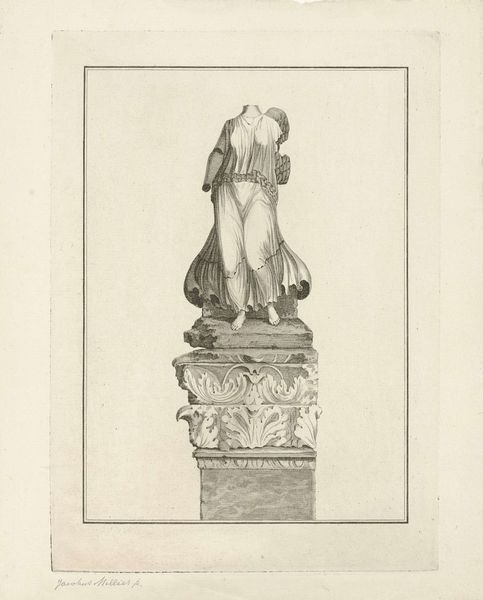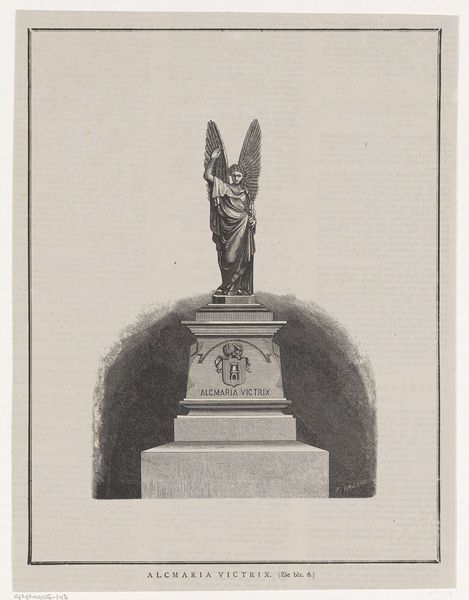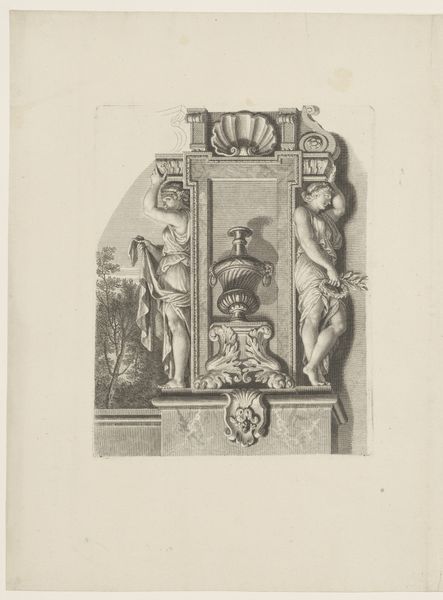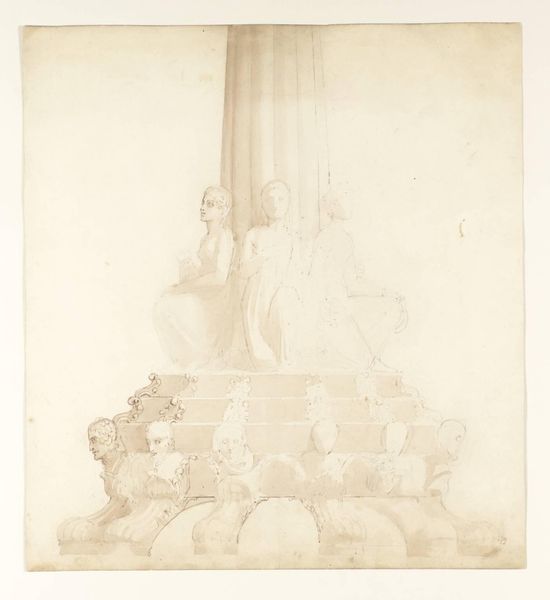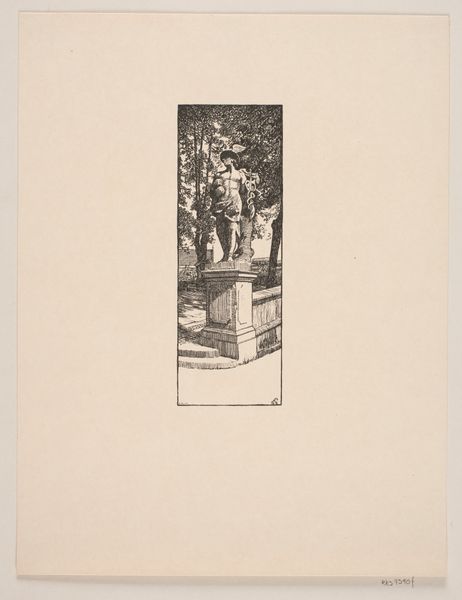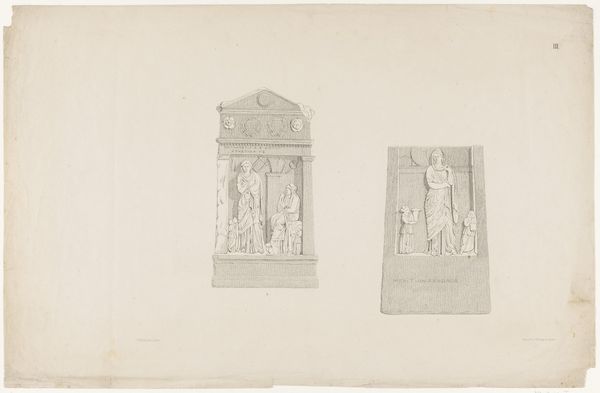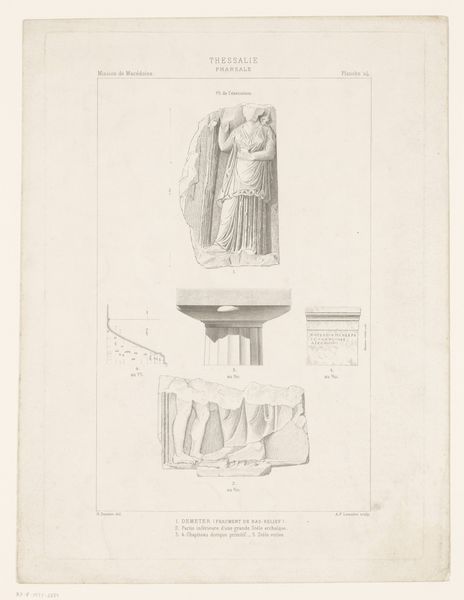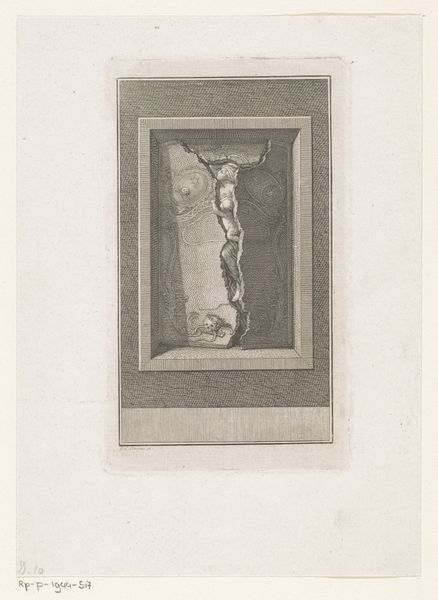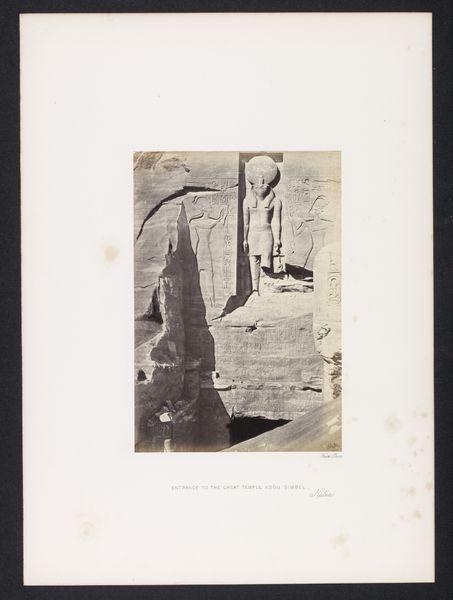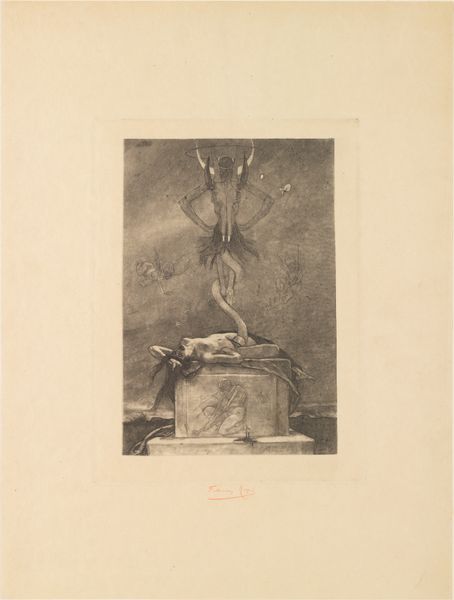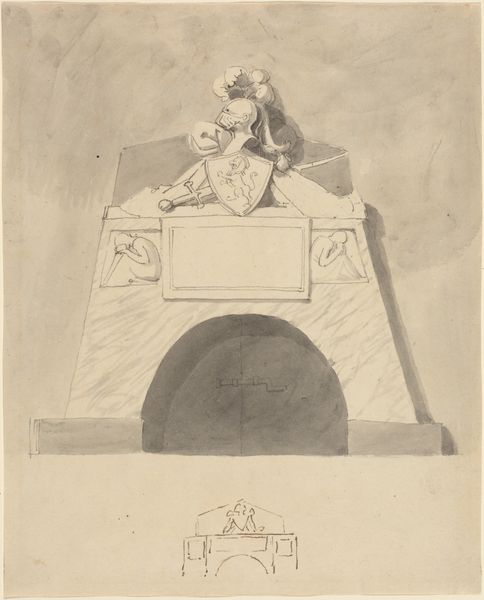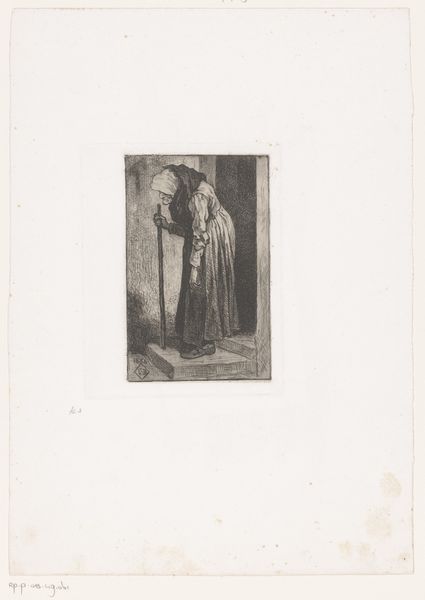
drawing, print, engraving
#
drawing
#
baroque
# print
#
old engraving style
#
figuration
#
history-painting
#
engraving
Dimensions: height 298 mm, width 181 mm
Copyright: Rijks Museum: Open Domain
Curator: This drawing from between 1732 and 1734 depicts an altar to the Roman god Neptune. Editor: My first impression is one of austerity. The stark lines and limited shading convey a sense of solemnity and strength, despite the modest presentation of this maritime deity. Curator: Indeed, there's a purposeful lack of embellishment that resonates with the values attached to Nepture—order, control, raw nature. It's by François van Bleyswijck, employing an engraving technique to capture detail with clarity, mirroring a baroque aesthetic intent on rational representation. We find the same attention in classical sculpture that has been preserved throughout history. Editor: Exactly! It's crucial to situate depictions like these within the context of power dynamics. Neptune, ruler of the seas, becomes a symbol of dominion, used throughout centuries for social hierarchies, to symbolize male dominance over both sea and land. How was this drawing received by his contemporaries? Curator: The Rijksmuseum holds this print as a reference for a certain classicism; to Bleyswijck’s contemporaries, understanding classical allegory and symbols of governance would have been crucial to civic identity. For example, the trident, a symbol so obviously associated with Neptune here, reflects divine and state control, while alluding to deeper subconscious associations. Editor: I see that classical order imposed quite unilaterally, though. I can’t help but see it as a visual representation of how those in power cement the naturalness of such social categories to serve various means of power. Curator: Yet, the enduring influence of figures like Neptune suggests that they embody elements of the collective, revealing universal desires for structure in the chaos of existence. Perhaps we seek control where it is naturally uncontrollable? Editor: Or, rather, it showcases how effectively ideologies embed themselves by tapping into a very deep universal desire for stability. A symbol becomes so pervasive that we often overlook its specific context. Curator: I think that your sensitivity regarding ideological encoding underscores how symbols reflect not only our aspirations but the complex histories that shaped them. Editor: Likewise, it’s been intriguing to analyze how an ostensibly simple engraving continues to broadcast power dynamics throughout human societies. Curator: A profound observation, indeed. It forces a re-assessment of how even images work actively in shaping reality.
Comments
No comments
Be the first to comment and join the conversation on the ultimate creative platform.
